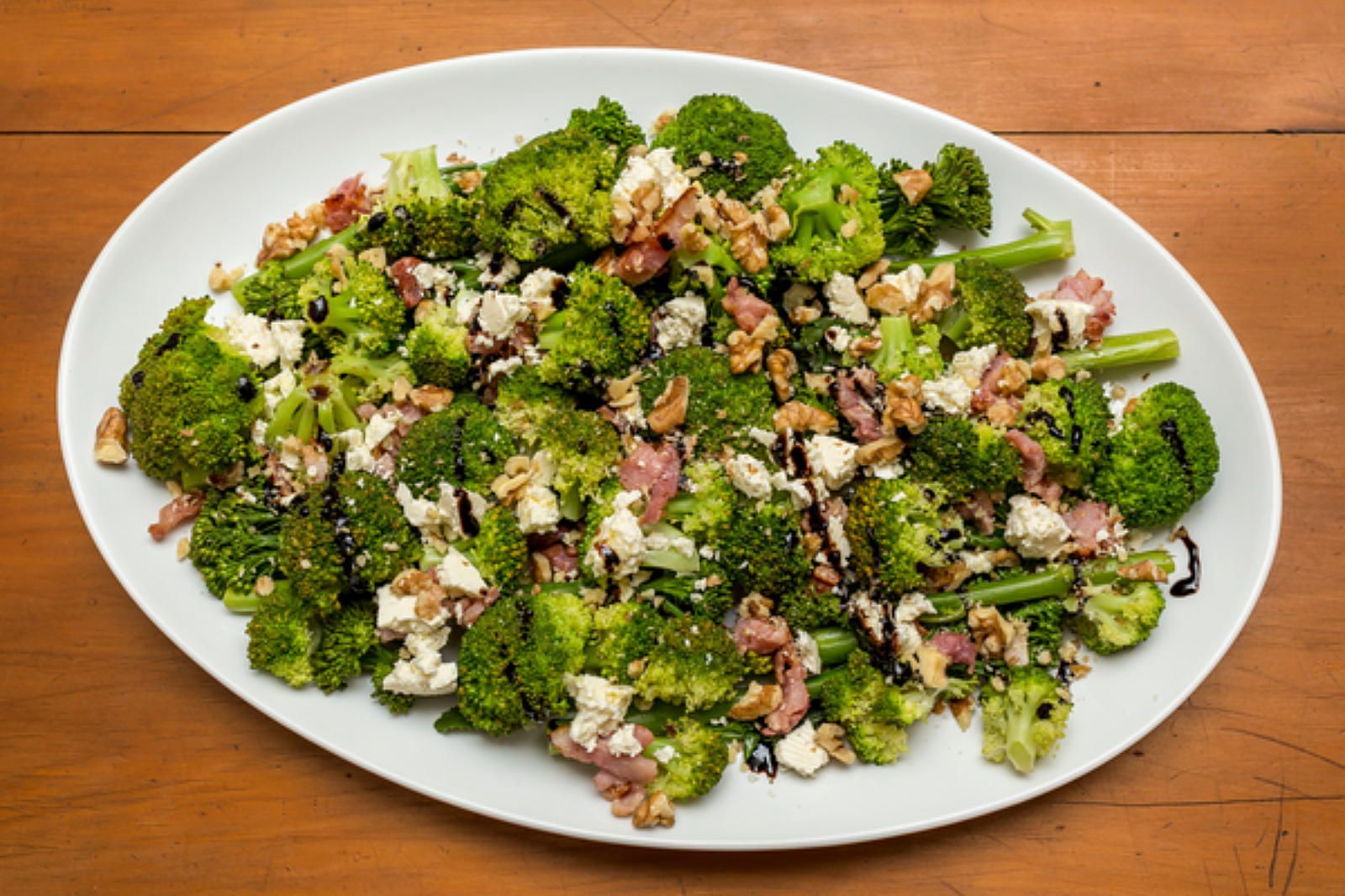How to Write a Small Restaurant Business Plan
Tyler MartinezAuthor
Business Plan for Small Restaurants Guide
It's easy to see why people like to start small in the restaurant industry. Small restaurants have flexibility and agility that larger restaurants and corporate chains aren’t afforded, with lower starting costs and lower overhead costs. They require a smaller team, less credit and capital to get off the ground, and are often easier to maintain. And limited space and seating does not limit profit — well-managed small, counter-service restaurants can be valuable assets.
Counter service shops (that serve anything from shawarma to tacos to sandwiches to sushi), sidewalk bistros, high-end, exclusive fine dining restaurants, and sit-down cafes are just a few examples of the small restaurant models that this article can help you to plan. It makes sense to start small! Let's dive in.
Why You Need a Small Restaurant Business Plan
You probably have a solid idea of what you want your small restaurant to look like and spend time imagining everything from the menu design to the daily operations of employees. A business plan helps you to communicate that vision to potential investors and business partners.
Building a business plan for your small restaurant helps you start making decisions about the location of your restaurant, the equipment you purchase, the staff you hire, and the ingredients you supply your business with which are all crucial to the success of the whole restaurant. Crafting a coherent plan for all the intricate moving parts of a restaurant is the first step.
Taking your inspiration for a neighborhood build-your-own charcuterie board restaurant and wine garden from a vision board to reality starts with a plan. Kick your imagination into high gear while ensuring that your ideas for all the overlapping details stay organized by writing a business plan.
How to Write a Small Restaurant Business Plan (Description, Examples, Proposals)
As with any writing project, it can be difficult to decide how to start describing your vision for a small restaurant. Start with this fully customizable restaurant business plan template that's perfect for any small restaurant.
This article provides useful writing tips for your small restaurant’s business plan and includes advice on how to structure and present your business plan to attract potential investors or business partners.
Restaurant Business Plan Template
No matter where you’re at in your restaurant ownership journey, a business plan will be your north star. Organize your vision and ensure that nothing is overlooked with this free template.

Elements of a Small Restaurant Business Plan
Executive Summary
The executive summary of your small restaurant’s business plan is your prime opportunity to impress potential investors and business partners. As you write this section, consider how you can get your audience interested in your restaurant’s plan and keep them engaged with your ideas.
The executive summary might include information about the specific kind of restaurant you’re planning for, the type of food or chef you’ll feature, the mission of and the core values of your business. This is your first chance to start to set up a coherent vision for your business and brand.
Company Overview
The company overview is more practical than attention-grabbing. This section of your small restaurant’s business plan will introduce the market you’ll be entering, a summary of financial need and projections, and an intro to the location, supply chain, and marketing strategy you'll use.
Think of the company overview as a glossary for the rest of the business plan by defining key terms and concepts. Consider using this section to answer any big questions investors might have about your business plan – how will you consistently supply your restaurant with the six rare types of cheeses that are central to your mac-and-cheese-focused menu?
Team and Management
Staffing for your small restaurant will be unique to the kind of restaurant you’re planning to open and it’s critical that you consider your role in the business and the roles you’ll need to fill. Labor is often the largest cost for restaurants, and the details in this section will inform accurate financial projections and operations later in the business plan.
Whether you and your partner plan to run an elegant, intimate bistro or have big plans for a small smokehouse, it’s crucial that you start to think about who will prepare food, run payroll, and serve guests.
The ownership structure, chain of command for management and staff and the kinds of jobs you’ll be creating (full-time, part-time, benefits, etc.) can also be detailed in the team and management section of your small restaurant’s business plan.
Sample Menu
This is where your small restaurant business idea will really shine. Pull out all the stops when designing sample menus and writing menu descriptions for this section of your business plan. Craft a sensory experience for potential investors and clients through descriptions of your favorite recipes.
Food and beverages are often the heart and soul of any small restaurant, and when they're coupled with outstanding service, they're the key to creating an experience that guests will come back for. Potential business partners will be interested in your passion for this business, and sample menus and item descriptions are an opportunity to convey that passion.
As you design menus, consider how you will source the ingredients for the staple items you will serve and how those supply chains factor into financial projections and market analyses for your small restaurant.
Restaurant Menu Templates
Use these menu templates as a starting point for your menu design or to give your menus a refresh.

Market Analysis
Location, customer base, average restaurant prices in your area, competition in the style and kind of food you sell – all of these factors are important to consider when setting up your small restaurant for success. In this section, let potential business partners that you’ve done the legwork to ensure that your business will succeed.
Consider the other restaurants in your area that serve small plates and craft cocktails with a robust happy hour and the other wood-fired pizza kitchen across town that has 1,000 reviews and a 4.9-star rating. How do you plan to capture the customer base in your area that already buys what you want to serve or, if offering something new in a market, how will you get customers to try it?
Marketing and Publicity
Once you get your guests in the door and provide them a world-class experience, word of mouth marketing will be part of what keeps guests coming back — but it's not enough to rely on just that. Make plans to use the reach of social media and the hype of a grand opening event to spread the word about your new restaurant. Then, once you're up and running and building your customer list, email marketing can be an amazing way to remind one-time guests that yours is the best restaurant to visit on their birthday.
Loyalty and rewards programs for regular customers are another great way to get guests back in the door. It can be valuable to have such programs planned and ready to launch at open so you can sign up new customers who are excited about your new restaurant and brand.
A solid marketing and publicity strategy lets potential investors know that you’re not just interested in quick success. You’re making plans to convince customers to buy what you serve, which will make your business profitable for years to come.
Restaurant Marketing Plan
Create a marketing plan that'll drive repeat business with this customizable marketing playbook template and interactive calendar.

Branded Graphics
Designing graphics or working with a designer to craft typography and logos for your menus and marketing is one of the most exciting aspects of opening a new business. Let your creativity soar and choose graphics that will communicate the ethos of your brand to potential investors and, eventually, loyal customers.
Brand recognition is hugely important, especially if you have plans to expand your small restaurant to additional locations. When designing graphics, think about what key element or logo you might use across your promotions and packaging that will remind your customers of the unique experience you provide in your small restaurant.
Business Operations
This section is where you put the proof in the pudding (one of many food-based idioms that I love but don’t fully understand). The business operations section of your small restaurant’s business plan can never be too detailed – make plans for how your restaurant will run from daily to quarterly to yearly. This section will become a reference point as your restaurant develops and grows.
Imagine that you decide to open a cheese shop that has a small bistro area where your head cheesemonger pairs local bread, harvests, jams, and nuts with the cheese your source from around the world. Who is that cheesemonger – is it you? Make plans for who's going to do what, from running payroll, to selling cheese to customers in the storefront, to handling wholesale orders for cafes around town. Furthermore, write about your expectations for specific employees, roles in the company, and how employees curate the customer experience.
Financing and Loans
The startup costs for your small restaurant will depend on the kind of food you want to prepare and serve, and include the equipment required, hiring and training for staff, renting a space, marketing, and, of course, the time and energy you put into writing this plan and getting everything in order for your first day of business.
Consider all your financing options when planning to open a small restaurant – some of these include lines of credit, small business administration (SBA) loans, merchant cash advances, crowdfunding, commercial real estate loans, equipment financing, purchase order financing, and bank or alternative loans.
Read this next

The Complete Guide to Restaurant Financing and Loans
Whether you’re opening a new restaurant, expanding your concept, or renovating within your existing four-walls, you’re going to need capital to make it all happen.
Sales Forecasts and Operating Expenses
Business plans commonly include a break-even analysis, which compares the sales required to break even with the cost of expenses each month. Investors will be interested in the potential for profit and loss in order to assess the risk of contributing to your business, but a profit and loss statement for a business that isn’t open yet requires some educated projections.
A cash flow analysis shows investors that the company can support itself without additional investments by detailing planned spending on labor, supplies, and operations. Be sure to consider how the costs unique to your small restaurant, such as cleaning supplies or seasonal labor costs, balance at the end of each quarter.
How to Present Your Small Restaurant Business Plan
There are a few ways to prepare to communicate with investors about your business plan and get them interested. As you write and edit your plan, you'll get to know every detail about your small restaurant. Remember that the way you talk about your business should be tailored to the situation you find yourself in.
First, send your business plan to investors and banks far and wide – put your concept and plan in the hands and minds of as many people as possible. You can’t hear no (or yes!) unless you ask.
Perhaps you’re at a networking event for local small restaurant owners and financers. You might want to have a 30-second elevator pitch prepared so that you can quickly sell them on your small restaurant idea. Be sure to include something memorable and exciting, or make an opportunity for questions to keep people talking.
Once you secure a meeting with a potential investor or partner, you’ll want a more detailed presentation that presents all the key elements of your business plan. And it’s good practice to anticipate potential questions and prepare answers for questions you encounter for the first time. When networking, be honest and genuine, even if you don’t have a ready answer for each question that comes your way. Let them know you'll follow up with the answers soon — and actually do it!
Related Small Restaurant Resources
Restaurant Business Plan Template
No matter where you’re at in your restaurant ownership journey, a business plan will be your north star. Organize your vision and ensure that nothing is overlooked with this free template.

Is this article helpful?
DISCLAIMER: This information is provided for general informational purposes only, and publication does not constitute an endorsement. Toast does not warrant the accuracy or completeness of any information, text, graphics, links, or other items contained within this content. Toast does not guarantee you will achieve any specific results if you follow any advice herein. It may be advisable for you to consult with a professional such as a lawyer, accountant, or business advisor for advice specific to your situation.





